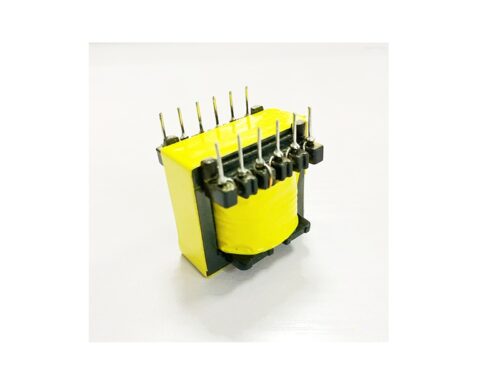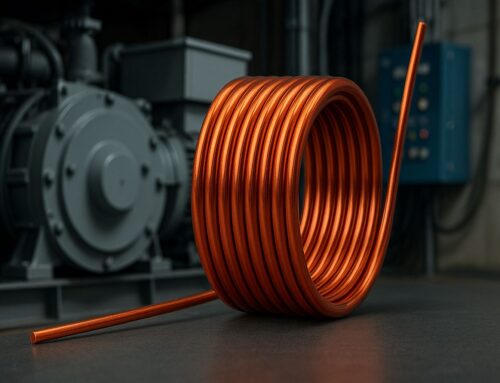Ultra High Frequency (UHF) RFID systems are indispensable in modern logistics, inventory management, and asset tracking. One of the key factors that impact the range and performance of UHF RFID systems is the type of coil used in the system. Air core coils have recently emerged as an effective solution to extend the read range of RFID tags. But how exactly do air core coils contribute to a 30% range improvement in UHF RFID systems? This blog will delve into the science behind air core coils, the advantages they provide, and why they are a game-changer for RFID technology.
Challenges in UHF RFID Range Optimization
1. Limited Range of Traditional Coils
One of the primary concerns with UHF RFID systems is their range. Traditional coils, especially those with ferrite cores, have limitations when it comes to signal strength. The range of RFID tags can be restricted by the size and configuration of the coil, leading to challenges in environments where long-range readings are essential.
2. Environmental Factors Affecting Signal Strength
RFID performance can also be impacted by environmental factors such as interference, metal surfaces, and moisture. These elements can cause signal attenuation, reducing the effective range of RFID tags. Companies often face challenges in ensuring consistent performance in such conditions.
3. Complexities in Designing Efficient Antennas
Antennas are crucial components in UHF RFID systems, responsible for transmitting and receiving electromagnetic waves. However, the design and optimization of RFID antennas, particularly for increased range, can be complex. Ensuring high performance while maintaining compactness and cost-effectiveness remains a significant challenge for manufacturers.
The Technology Behind Air Core Coils and UHF RFID Range
What Are Air Core Coils?
Air core coils are electromagnetic coils that use air as the core material instead of traditional magnetic materials like ferrite. By utilizing air, these coils significantly reduce energy losses caused by eddy currents, allowing for more efficient signal transmission.
The air core coil works by generating an oscillating magnetic field when electrical current passes through it. This field interacts with the UHF RFID tags, energizing them and enabling them to respond to the reader. Unlike ferrite core coils, which require magnetic materials to guide the flux, air core coils avoid flux saturation, leading to improved signal strength and range.
Why Do Air Core Coils Improve UHF RFID Range by 30%?
Air core coils have the advantage of low resistance and higher efficiency. They do not suffer from the signal loss associated with ferrite cores, which tend to cause energy dissipation as heat. The lack of magnetic saturation in air core coils also ensures that the signal remains strong, even when the distance between the RFID tag and reader increases.
Research and practical applications have shown that UHF RFID systems utilizing air core coils can achieve up to a 30% greater range compared to systems using ferrite cores. This improvement in range can be crucial for large-scale inventory management, logistics, and asset tracking, where precise and long-range readings are essential for operational efficiency.
Technical Data Supporting the 30% Range Improvement
1. Increased Efficiency of Signal Transmission
Tests have shown that air core coils experience significantly lower energy losses during signal transmission compared to ferrite core coils. This increase in efficiency directly correlates to a stronger signal and better tag readability over longer distances. The higher efficiency allows for a larger RFID read area, improving the effectiveness of UHF RFID systems in real-world applications.
2. Reduction of Interference and Signal Attenuation
Air core coils offer better immunity to signal interference. Ferrite cores, while effective at concentrating magnetic fields, are also more susceptible to magnetic interference from surrounding materials. In contrast, air core coils minimize this interference, which is particularly advantageous in environments with heavy machinery or metal surfaces that would otherwise attenuate the signal.
3. Better Performance in Harsh Environments
Environmental conditions such as extreme temperatures, moisture, and electromagnetic interference (EMI) often impact RFID system performance. Air core coils can operate effectively in a wider range of environmental conditions, maintaining their efficiency even in harsh industrial settings. This robustness makes them ideal for use in logistics and supply chain management, where environmental factors often fluctuate.
Air Core Coils vs. Ferrite Coils: Key Differences and Benefits
1. Material Efficiency
Ferrite cores are commonly used in traditional coils because of their magnetic properties. However, these cores are prone to magnetic saturation, which reduces their efficiency. In contrast, air core coils do not suffer from saturation, making them more efficient for long-range applications.
| Feature | Air Core Coils | Ferrite Core Coils |
|---|---|---|
| Magnetic Saturation | No | Yes |
| Signal Efficiency | High | Moderate |
| Energy Loss | Low | Higher |
| Range Improvement | Up to 30% more | Standard |
2. Cost and Manufacturing Flexibility
Air core coils are often easier and less costly to manufacture compared to ferrite core coils. While ferrite materials can be expensive and challenging to produce, air core coils provide manufacturers with a cost-effective alternative without compromising on performance.
Real-World Applications of UHF RFID Systems with Air Core Coils
1. Asset Tracking and Inventory Management
The extended range of UHF RFID systems with air core coils allows businesses to track assets and inventory over greater distances. This capability reduces the need for frequent manual scanning, improving operational efficiency in warehouses, distribution centers, and retail environments.
2. Logistics and Supply Chain Optimization
Air core coils significantly enhance the reliability of RFID systems used in logistics. With a 30% longer range, UHF RFID systems can track shipments and packages in transit, ensuring that logistics teams can monitor the location and status of goods in real-time.
3. Industrial Automation and Equipment Monitoring
In industries where machinery and equipment require constant monitoring, UHF RFID systems with air core coils can help improve system reliability. With better signal strength, these systems ensure that critical assets are constantly monitored without risk of lost or delayed data transmission.
Conclusion:
The integration of air core coils into UHF RFID systems has proven to be a game-changer in improving range and reliability. By enhancing signal strength and reducing energy losses, these coils provide up to 30% more range, making them an ideal solution for applications in logistics, inventory management, and asset tracking.
As more industries recognize the benefits of air core coils, UHF RFID systems will continue to evolve and provide more efficient, cost-effective solutions for businesses worldwide. If you’re looking to enhance the performance of your RFID systems, consider integrating air core coils for maximum efficiency.
For more information on RFID solutions and to explore product options, visit our product category pages.





Leave A Comment